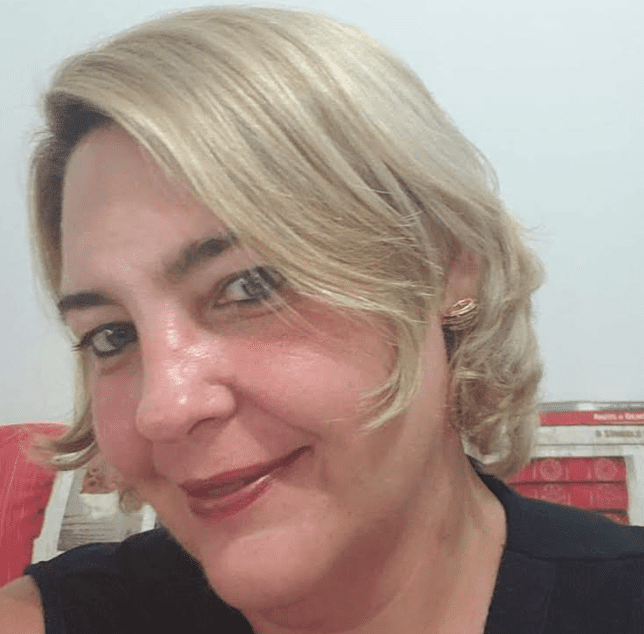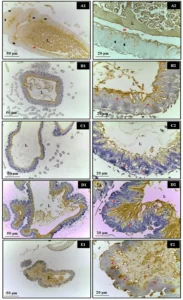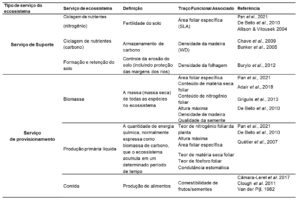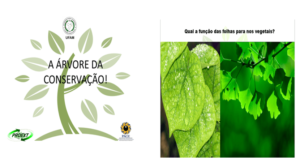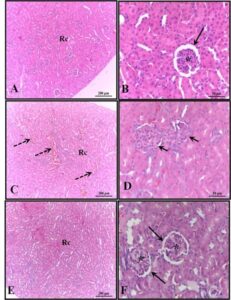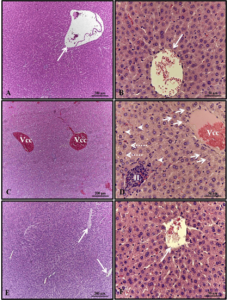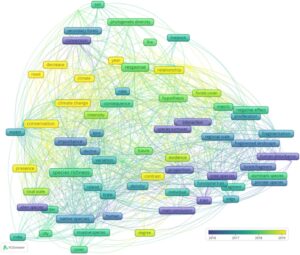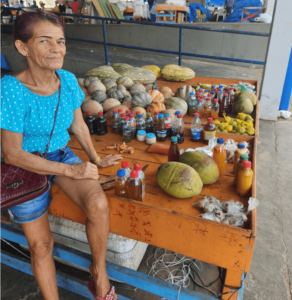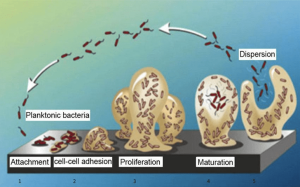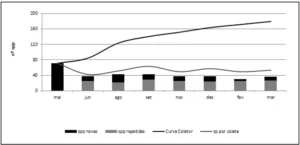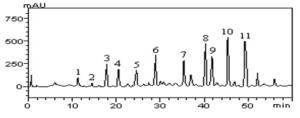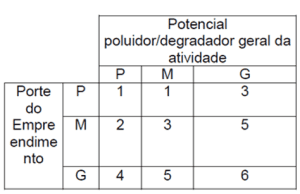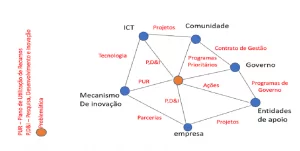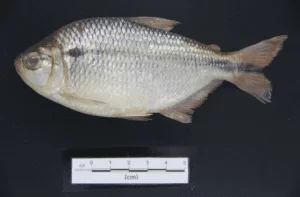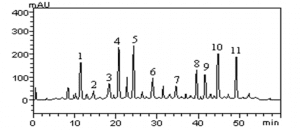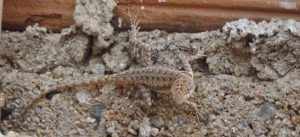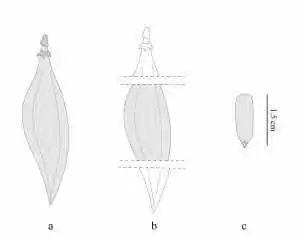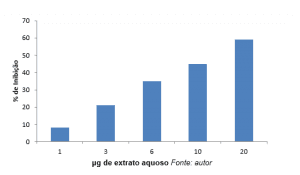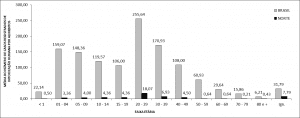INTEGRATIVE REVIEW
MALOSSO, Milena Gaion [1], SUPRAVIDA, Keila Abreu [2], LIMA, Paula Andreza Viana [3], GUILHERME, Adriano Pereira [4], SANTOS, Ivan Monteiro dos [5], LEÔNIDAS, Lilian Vieira [6], FARIAS, Fleming Nabeshima de [7]
MALOSSO, Milena Gaion et al. The evolution of the medicine course at the Institute of Health and Biotechnology of the Federal University of Amazonas in the municipality of Coari/AM, and its current implementation status. Revista Científica Multidisciplinar Núcleo do Conhecimento. Year 08, Ed. 12, Vol. 03, pp. 160-179. December 2023. ISSN: 2448-0959, Acess link: https://www.nucleodoconhecimento.com.br/biology/implementation-status, DOI: 10.32749/nucleodoconhecimento.com.br/biology/implementation-status
ABSTRACT
The implementation of the medicine course in Coari-AM is a recent achievement for the city and the entire Middle Solimões region, crucial to addressing the shortage of doctors in the Northern Region, which has an average of about 1.4 doctors per thousand inhabitants across all its states, representing some of the worst indicators in Brazil. Thus, aiming to understand the history of the implementation of the medicine course at the Institute of Health and Biotechnology (ISB) in Coari at the Federal University of Amazonas (UFAM) and the current state of implementation, the objective of this work was to report the historical facts about the implementation of this course based on a substantiated analysis of the current work reality offered to the medical faculty involved. For this purpose, the perspectives of the faculty who worked on the implementation of the course were investigated, the causes leading to the attrition of medical professionals from the ISB were diagnosed, and measures were proposed to retain these professionals in this Institute. This work is justified because conducting a historical survey of the implementation of the medicine course at the ISB in Coari is necessary to obtain an accurate diagnosis of the current causes of attrition among faculty in this medical undergraduate program. As a result, it was found that for the purpose of implementing the course, only one building was constructed, but it was not equipped. There was institutional failure in developing a job profile for the hiring of faculty for this course, so only twelve professors with a medical background were hired. The same happened with administrative staff, so there are only two permanent employees specifically supporting this course.
Keywords: Implementation of medicine course, Challenges in retaining professionals in the interior of states in the northern region, Institutional diagnostics.
1. INTRODUCTION
The implementation of the medicine course in Coari is a recent achievement for the city and the entire Middle Solimões region, which previously lacked a higher education institution offering courses in this field. The idea of bringing a medicine course to the municipality arose from the need to address the shortage of doctors in the region and provide an educational opportunity for the youth in this area and its surroundings.
The establishment of this course was of paramount importance, as, according to Pávoa and Andrade (2006), Brazil faces a significant shortage of medical professionals willing to work in the interior of states. Silveira and Pinheiro (2014) identified that the Northern Region has an average of about 1.4 doctors per thousand inhabitants across all its states, representing some of the worst indicators in Brazil. These numbers highlight a scenario of increased vulnerability with significant difficulties in accessing doctors in the region (Brasil, 2012).
In the case of the municipality of Coari, located 360 km by river from the capital Manaus/AM, the city has an indicator of 0.2 doctors for every 1,000 inhabitants, a number ten times lower when compared to the index of the capital Manaus, which is 2.0 doctors for 1,000 inhabitants (Guimarães et al., 2020).
For various reasons, there is a significant challenge in retaining medical professionals in this city, leading to a high turnover of these professionals. The majority of doctors working in Coari are general practitioners, recent graduates who come to the municipality to work for short periods ranging from 2 months to 1 year and, after this period, return to the capital to continue the specialization process (Faria, 2019).
The implementation process of the medicine course in Coari occurred through the Restructuring and Expansion of Universities (REUNI) project, launched by the Ministry of Education in 2005 and officially endorsed by MEC/SESU Ordinance No. 109, on June 5, 2012. The project aimed to promote the interiorization of Federal Universities, including the expansion of slots in existing medicine courses and the creation of new medicine courses in Federal Universities (Brasil, 2012). Thus, for the medicine course to take place in Coari, several partnership agreements were established between the Institute of Health and Biotechnology (ISB) of the Federal University of Amazonas (UFAM) and the Municipal Government, where the former would provide the theoretical framework, and the latter would provide the practical infrastructure, enabling students supervised by faculty from various medical fields to carry out necessary practical activities for the proper training of the student, both at the Regional Hospital of Coari and at the fourteen Basic Health Units (Faria, 2019).
With the partnership consolidated, the construction and equipping of the medicine course building began. Simultaneously, several calls for the hiring of professors from various medical fields were opened. In addition, selection processes were initiated to choose students who were initially allocated to Campus I of this Institute. However, currently, they are already carrying out all activities related to this course at Campus II, which was inaugurated on March 29, 2021 (UFAM, 2021).
The implementation of the medicine course in Coari brought several benefits to the city and region because, in addition to training qualified professionals who can work in the municipality and its surroundings, the course also attracts students from other locations, boosting the local economy and creating new job opportunities in various sectors, not only institutional but also municipal, generating income for the local population, which typically lacks employment opportunities.
The inclusion of UFAM among the Higher Education Institutions responsible for implementing new medicine courses in campuses in the interior contributes to achieving the interests and objectives of the institution, expressly systematized in its Institutional Development Plan (UFAM, 2019).
Therefore, aiming to understand the history of the implementation of the medicine course at ISB in Coari, the objective of this work was to report the historical facts about the implementation of the medicine course in the Municipality of Coari based on a substantiated analysis of the current work reality offered to the medical faculty at the Institute of Health and Biotechnology of the Federal University of Amazonas. For this purpose, the perspectives of the faculty who worked on the implementation of the course were investigated, the causes leading to the attrition of medical professionals from ISB were diagnosed, and proposals for implementing measures to retain these professionals in this Institute were made. This work is justified because conducting a historical survey of the implementation of the medicine course at ISB in Coari and analyzing the evolution of this stage are necessary to obtain an accurate diagnosis of the causes of attrition among the teaching professionals of the ISB medicine course.
2. MATERIALS AND METHODS
For the realization of this case report, a literature review was conducted on Google Scholar using the terms “Interiorization of Medicine Course,” “Implementation of Medicine Course in Coari,” and “Difficulties in the retention of Medical Professionals in the interior of the States.” Inclusion criteria involved the period between 2000 and 2023, relevance to ISB, having undergone editorial scrutiny, addressing the Medical School, having indicators related to sociocultural aspects of the Municipality of Coari, being written in Portuguese, and being within the period equivalent to the implementation of the medicine faculty in Coari. Following this step, two focus group discussions were conducted with ISB faculty, the first with those involved in the implementation of the course and the second with current faculty teaching in the medicine course. The objective was to gather information on the historical development of the Medicine School at ISB, the current state of the course, identify reasons for the attrition of medical faculty, and propose solutions to address this issue. Inclusion criteria involved being individuals involved in the history of the implementation of the course, and exclusion criteria required participants to be working at the Institute of Health and Biotechnology of the Federal University of Amazonas during the project period.
Data collection was conducted through two focus group discussions with professionals meeting the specified criteria. Participants were informed in advance that the discussion would contribute to an article (in which all participants would become co-authors), and those willing to express their opinions were asked to stay, while dissenting individuals were free to leave. After this stage, the data were transcribed and then analyzed.
During the focus group discussions, personal information such as name, role, duration of work in the medicine course, and area of expertise were gathered. Additionally, questions were posed regarding building structure, technical-laboratory and administrative composition, faculty composition, and the reasons hindering the retention of medical professionals in the course. A critical analysis of the Pedagogical Project Course (PPC) and its challenges for implementation was also conducted.
3. RESULTS AND DISCUSSION
The expectation was that the implementation of the medicine course at ISB would contribute to improving health in the region, reducing the shortage of doctors, and expanding access to quality healthcare services. Additionally, the training of local doctors was expected to strengthen the connection with the community, fostering an understanding of local needs and realities. However, as evident from the conversations held by these authors, there is a significant challenge in retaining medical professionals in the municipality of Coari.
The establishment of this course represented a significant milestone for the city and region, providing education and opportunities for local youth, which should have contributed significantly to the health of the local population. However, in practice, it is observed that both graduate students and tenured medical faculty end up migrating to the capital, where they find greater opportunities to work in the field of healthcare and, consequently, increase their income.
This can be easily verified, as shown in the graph, where out of the 86 students enrolled so far, 02 (7.69%) were dropped, 06 (6.97%) transferred, 30 (30.88%) withdrew, 07 (8.13%) graduated, and 41 (47.67%) are currently enrolled students.
Graph 1: Current status of students in the medicine course at the Institute of Health and Biotechnology of the Federal University of Amazonas.
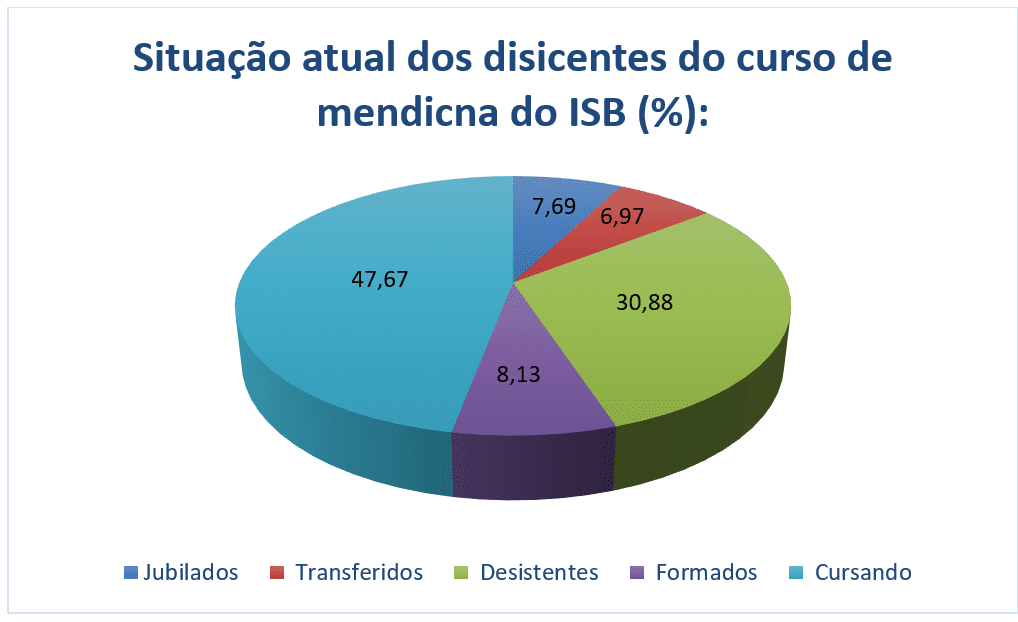
As can be analyzed in Graph 1, the number of students who have graduated and are currently enrolled in the medicine course is 48 (55.81%), indicating a significant dropout rate from this course, as 38 (44.19%) of the students abandoned their studies at this institute. In the focus group discussion among ISB faculty, it was identified that the main reason for this high attrition was that the students took entrance exams and were accepted into institutions of higher education closer to the capitals or located in these cities. This reinforces the need for training doctors to work in cities in the interior of states, especially in the North and Northeast.
To further analyze this data, we sought to relate it to information regarding the implementation of the course found in the literature review.
In the literature review, 7 texts were selected to provide information for this text, as shown in Table 1 below:
Table 1. Literature Review
| Title | Authors | Year of Publication | Information |
| Portaria Nº 109, de 05 de junho de 2012 | BRASIL, Ministério de Educação | 2012 | Legislation regarding medical vacancies and the creation of new medicine courses in Federal Universities. |
| A interiorização do curso de medicina e o Programa Mais Médicos para o Brasil: o caso da Universidade Federal do Amazonas em Coari -AM. | Ricardo dos Santos Farias | 2019 | Concerns the implementation of medicine courses at the Institute of Health and Biotechnology of the Federal University of Amazonas under the auspices of the More Doctors Program. |
| Acesso ao serviço de saúde por ribeirinhos de um município no interior do estado do Amazonas. | Ananinas Fagundes Guimarães et al. | 2020 | Among other things, it deals with the distribution index of doctors in various locations. |
| Distribuição geográfica dos médicos no Brasil: uma análise a partir de um modelo de escolha locacional. | Luciano Pávoa and Mônica Viegas Andrade | 2006 | Among other issues, it addresses the challenges of retaining doctors in various locations. |
| Entendendo a necessidade de médicos no interior da Amazônia – Brasil | Rodrigo Pinheiro Silveira and Roseni Pinheiro | 2014 | Among other things, it addresses the issues of physicians’ retention challenges in various locations. |
| Em solenidade on line, UFAM inaugura o segundo campus de Coari. | Universidade Federal do Amazona, Assessoria de Comunicação | 2021 | Informs about the inauguration of Campus II in Coari, which houses the medicine course in this municipality. |
| Plano de Desenvolvimento Institucional – PDI 2019. | Universidade Federal do Amazonas, Pró-reitoria de planejamento. | 2023 | Among other things, it informs about the benefits for the municipality of Coari resulting from the implementation of the medicine course. |
Source: Authors (2023).
Attempting to understand the reasons for the search by students and faculty for Higher Education Institutions in large centers, various aspects were discussed that could favor this migration, and they are analyzed below.
Regarding infrastructure, Campus II of the Institute of Health and Biotechnology was built (Photo 1), consisting of a 4-story building with 13 classrooms, 3 tutorial rooms, 3 conference rooms, and 1 student center. It also includes 1 course coordination room, 1 staff lounge, 1 administrative technicians room, 1 data processing room, 1 human resources room, 1 director’s and academic secretary’s room, 1 meeting room, 1 administrative coordination room, and 1 management room. It also features a virtual reality laboratory, a medical microbiology multiuse laboratory, a general multiuse laboratory, a parasitology multiuse laboratory, two semiology and semitechnical multiuse laboratories, a women’s health laboratory, a dry anatomy laboratory, a surgical technique and experimental surgery multiuse laboratory, and a sterilization room. Additionally, it has a warehouse, a library with an extensive collection, a fully equipped computer room, an auditorium with a capacity for 100 people, a fully functional university restaurant, a security guardhouse, and ample internal parking.
Photo 1: Campus II of the Institute of Health and Biotechnology of the Federal University of Amazonas (2023)
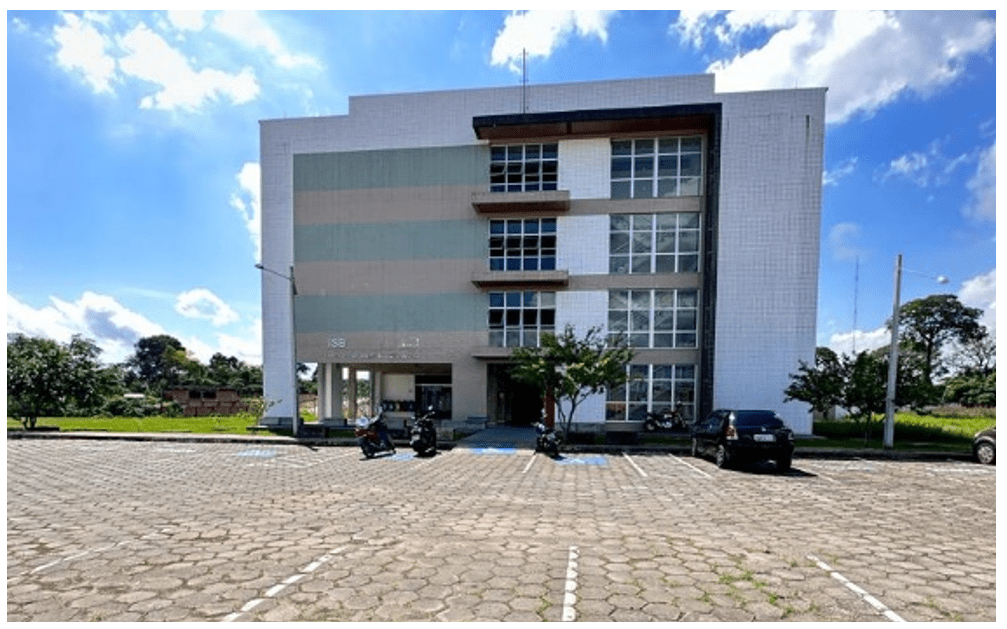
In the discussion, it was diagnosed that, although the building structure is suitable for the medicine course, the building is not adequately equipped, lacking essential equipment for the proper functioning of the course, such as anatomical models, gynecological models, resuscitation mannequins, heart and lung auscultation mannequins, venous puncture mannequins, suture mannequins, among others, which are extremely necessary for the practical initiation of medical activities.
Following the pre-established inclusion and exclusion criteria, the first round of conversation was held among four faculty members, all tenured at the Institute of Health and Biotechnology (ISB) of the Federal University of Amazonas (UFAM), actively involved in the implementation process of the medicine course in the municipality of Coari.
Faculty member 1 has been working at ISB since August 2009 and was the academic coordinator of ISB when negotiations for the implementation of the course in Coari began, actively participating in this stage. Faculty member 2 has been working at ISB since October 2006 and was the coordinator of the Bachelor’s degree in Biotechnology and President of the Teaching Nucleus of this course, being appointed to work in the pedagogical stages of the implementation of this course. Faculty member 3 has been working at ISB since 2016 and is a medical faculty member hired through the first job opening for professors in the medicine course, actively involved in the practical implementation of this course since the enrollment of the first medicine class at this institute. Finally, the fourth faculty member is the current coordinator of the medicine course at ISB, although assigned to the Faculty of Medicine in Manaus and has been working at UFAM since 1979. During this conversation, the following questions were raised:
1) Do you know the history of the implementation of the Medicine course?
When asked if they were familiar with the history of the implementation of the Medicine course at ISB, faculty member 1 responded that he knows it well since he was the academic coordinator at the time and supported the implementation of this course, which is a result of a program to expand university courses launched in the first term of former President Dilma Rousseff. He further explained that UFAM chose to accept this expansion because it would receive funding for infrastructure and positions for faculty to implement the medicine course in Coari since the Institute in this municipality focuses on Health and Biotechnology, already having part of the infrastructure and faculty needed for the start of the course since ISB is a health hub and already had the courses in Nursing, Physiotherapy, and Nutrition.
This faculty member also mentioned that he attended several meetings with the university administration and professors from the Faculty of Medicine in Manaus, and the latter strongly resisted the implementation of this course in Coari, suggesting that it should be an extension of the course in Manaus because they believed the course would not be viable in Coari. Ultimately, the University Council approved the opening of the course in Coari.
Faculty member 2 informed that she also knows the history of the implementation of the medicine course in Coari well and supported the implementation since she was part of the Board of Directors at the time and was appointed along with other professors as a member of the Commission for the Implementation of the Medicine Course at ISB. She also reported participating in several meetings with MEC members and professors from the Faculty of Medicine in Manaus, where the feasibility of implementing the course in Coari was discussed multiple times. Faculty member 3 mentioned that he knows that many meetings took place in the period from 2013 to 2014 for the implementation of the course before his entry in 2016, and when he was hired for teaching duties, all the structural and pedagogical aspects were already ready. Faculty member 4 stated that he knows the history of the implementation of the medicine course in Coari from the very beginning to the present moment.
In the second conversation round, where there were, in addition to faculty member 3, three more recently tenured faculty members (in 2019, 2022, and 2023) for teaching in the medical school, when asked, they responded that they were not familiar with the history of the implementation of this course.
2) What are the main problems of the Medicine course that you identify?
The interviewees 1, 2, 3, and 4 diagnosed that the main problem encountered in the medicine course is the retention of medical faculty in the municipality, as the professor’s salary is not very attractive compared to the amount these professionals receive working in medical care. Interviewees 1 and 2 report that, in an attempt to overcome this problem, positions for 20-hour teaching roles were created so that doctors could also work at the Regional Hospital of Coari, at the UBSs of this municipality, as well as in private clinics. However, the retention difficulty persisted, as several job openings were announced for the hiring of medical faculty, and many of them had no applicants.
Additionally, most of these professionals do not hold a master’s and/or doctoral degree, which is a factor for salary increase within the federal university setting. Therefore, the faculty, already reduced in number, consists only of graduates and specialists who do not have courses or specializations focused on teaching.
Another difficulty pointed out is that doctors do not want to engage in administrative activities, including coordinating the course, which hampers the didactic-pedagogical progress of the course, now being coordinated by dentists and nurses.
Faculty member 3 identifies as a problem that both faculty and students take career exams and entrance exams, respectively, with the intention of carrying out course activities in Manaus. The proposed solution is to make it clear in the notices that the course will be held in Coari, and both faculty and students should be aware of this.
Faculty member 4 adds as a problem the fact that the initial Curricular Pedagogical Plan (CPP) of the course, developed in 2014, was based on the CPP of Manaus and is not suitable for functioning in remote areas. This does not work for the reality of deep Amazonia, especially in the interior, as it is fragmented into specialized disciplines. This was the main problem that has already been corrected in the second CPP, which is now integrated, basic, circumclinical, based on thematic modules rather than disciplines. This faculty member also sees another problem as the lack of fixed teachers in the municipality and proposes that the new CPP is an alternative to eradicate this problem, which no longer requires the need for teachers specialized in medicine in Coari.
The recently hired faculty members also indicated the second CPP as a problem for the smooth running of the course since medical faculty members are not trained to work in active methodologies like PBL and also lack pedagogical knowledge to develop a CPP.
3) What do you think of the physical structure of the building?
Regarding the physical structure, faculty member 1 believes this is the strongest point of the course and has been praised by MEC members who monitor the implementation of this course. However, due to having a background in physics, he does not have the technical capacity to discuss the laboratories. Nevertheless, he clarifies that there is a need for the acquisition of material and some equipment for the course. Interviewee 2 believes that Campus II, where the medicine course is located, is excellent in terms of structure but, however, understands that, as it has been operating for seven years, faculty with expertise in the area should have already developed projects for the expansion of this infrastructure, such as a clinic-school and a teaching hospital. She also informs interviewee 1 that she does not have sufficient technical understanding to discuss laboratories, as she is a biologist. Faculty member 3 reports that, although the building designated for the medicine course is modern, it lacks access ramps for wheelchair users and disabled individuals, and the elevators have never worked, hindering assistance to people with mobility problems. These adaptations need to be addressed. As a professional in the field, he also identifies the lack of new mannequins for some theoretical-practical teaching activities in the laboratories. The existing ones in the laboratory were inherited from the nursing course, old, heavily used, and outdated, indicating the need for investment in this regard. He also informs that a tender was made years ago for the acquisition of various materials such as oximeters, intubation mannequins, and mannequins for physical and gynecological exams, new pieces for the anatomical laboratory, but nothing was delivered.
Faculty member 4 reports that initially, the infrastructure was neglected because UFAM and MEC had not invested in infrastructure at ISB for many years until the medicine course received financial support for the construction of the super-modern 4-story building with all the necessary environments. However, the construction of this building took about 5 years to be delivered due to logistical factors for Coari. Currently, Campus II is operational. He also states that the infrastructure could be improved with simulated reality equipment and training for technicians and faculty to use them, as well as the computerization of Campus II as a whole.
The new professors report that they either do not know the new building of Campus II or passed by it only at the time of their assumption of the position, as they are carrying out their teaching activities at the headquarters in Manaus.
4) What do you think of the faculty?
Faculty members 1 and 2 believe that the faculty of the course is good, especially those teaching basic disciplines who are all master’s or doctoral degree holders. They clarify that the technical faculty in the medical field is still very limited, with only 10 (ten) doctors, and few of them are specialists. To improve the technical faculty in the medical field, they suggest the creation of public policies that provide scholarships for medical professionals as a salary supplement to encourage doctors to stay on as faculty members.
They also understand that the administrative technical staff is good and qualified; however, they cannot provide suggestions on how to improve this aspect.
Faculty member 3 communicates that there are no issues with the faculty in the basic areas. Still, in the specific area composed of doctors, they observe that not only are there few professionals acting as faculty members, but they also do not want to settle in Coari, preferring to stay in the capital to accompany students’ activities from the second half of the course.
To improve the quality of the technical faculty in the medical field and to increase and partially fix it in the municipality, it is suggested that the institution implement modular disciplines and create mechanisms for these faculty members to stay in the municipality for only 15 days per month. This suggestion, however, cannot be implemented as it contradicts Law 8.112/90 (Brasil, 1990), regarding attendance issues. The newer faculty members report that they do not plan to settle in the municipality, as the move from the headquarters to the interior is not financially compensating.
As for the technicians, they are excellent, but it is reported that the project for the implementation of the medicine course includes 40 technicians, but many were diverted to other courses and functions, with few of them effectively assigned to carry out the course activities.
Faculty member 4 states that the technical staff at ISB is of good quality, as they are very dedicated to their work, play a good role, and there is an excellent interpersonal relationship among all employees. However, of the 24 technicians hired for the medicine course, many do not have roles related to medicine applied to health care and patient care; most are laboratory technicians. When defining profiles for future hires, it is necessary to have a more objective view of the core activities of the medicine course. One of the new faculty members also emphasizes the need to consult medical faculty members before defining the profile for hiring technical staff for the Faculty of Medicine in Coari.
In the words of faculty member 4, there is a recorded need for hiring a larger number of technicians in medicine because, in their view, the faculty is lacking due to having only 4 doctors residing in Coari, and the other medical professors of this course are working in Manaus.
Additionally, faculty member 4 notes that there are many professors from other courses such as nutrition, biotechnology, nursing, and physiotherapy working in the medicine course. This situation is valid since these external faculty members attempt to cover basic areas since faculty members from the medicine field are not interested in teaching disciplines at ISB; the medicine course integrates with the others.
Faculty member 4 also sees that, to improve the faculty, there is a need for teacher training for medical professionals, as well as qualification at the specialization, master’s, and doctoral levels for these professionals.
The recently hired faculty members could not provide an opinion on this matter.
5) What do you think of the Pedagogical Project of the Course?
According to faculty member 1, currently, there are two proposed Pedagogical Projects for the medicine course in Coari. The old one did not work because it was based on technical activities in the field of medicine that are only possible to be carried out in large cities. This led students to take courses at the headquarters in Manaus after the second half of the course. Therefore, it was replaced by the second one, which is based on PBL, a promising alternative methodology for the smooth operation of the course in the municipality of Coari.
Faculty member 2 cannot provide an opinion on this matter, as they no longer followed the progress of the medicine course after its effective implementation with the hiring of medical faculty.
Faculty member 3 reports that the first Pedagogical Project was based on traditional medicine, but since 2014, the use of active methodology has been mandatory in medicine courses, hence the need for the reformulation and implementation of the second Pedagogical Project. This methodology does not require faculty members specializing in all areas of medicine, which facilitates the complete implementation of the course in the municipality of Coari. However, they foresee the need for prior training of faculty members to work with this type of methodology.
The new faculty members again could not provide an opinion on this matter, indicating their lack of interest in the didactic-pedagogical development of the course since they want to continue their work at the headquarters in Manaus, even though they are hired to work in the medicine course in Coari.
Given the mentioned facts, it is concluded that the implementation of the medicine course in the municipality of Coari occurred under compulsion, as it started with several deficiencies that would be essential for its operation in practice. The most serious issue is the lack of medical faculty, a situation that persists to this day. However, to address difficulties in retaining medical professionals in the region, measures are needed, such as investments in medical infrastructure, financial incentive programs, and professional training. Additionally, the creation of policies aimed at improving the quality of life in rural areas, including the provision of basic services and access to recreation and culture, is crucial.
It is understood that by working in rural areas, professors have the opportunity to have a direct impact on the health of the local community. This emphasizes that their work goes beyond the classroom, allowing them to contribute to improving health services, training competent and aware professionals, and promoting preventive health measures.
4. CONCLUSION
The implementation of this course represented a significant milestone for the city and the region, providing education and opportunities for local youth, and significantly contributing to the local population’s health, job creation, and the stimulation of the local economy. However, it is necessary to make changes to the PPC. In order to explore alternatives for retaining medical faculty in the municipality of Coari, it is proposed to hire faculty on a 40-hour or 40-hour exclusive dedication basis, considering that the main complaint of these professionals is the low salary. Additionally, new public competitions should be held to hire both faculty and administrative staff with profiles suitable for the medicine course.
REFERENCES
BRASIL, Casa Civil, Subchefia de Assuntos Jurídicos. Lei Nº 8.112, de 11 de dezembro de 1990. Dispõe sobre o regime jurídico dos servidores públicos civis da União, das autarquias e das fundações públicas federais. 1990. Disponível em: https://www.planalto.gov.br/ccivil_03/leis/l8112cons.htm. Acesso em: 16 nov. 2023.
BRASIL, Ministério da Educação. Portaria Nº 109, de 05 de junho de 2012. Dispõe sobre as vagas de medicina e criação de novos cursos de medicina nas Universidades Federais. 2012.
FARIA, Ricardo dos Santos. A interiorização do curso de medicina e o Programa Mais Médicos para o Brasil: o caso da Universidade Federal do Amazonas em Coari -AM. 2019. Dissertação (Mestrado Profissionalizante e Saúde da Família) – FIOCRUZ. Coari – AM, 2019, p. 10.
GUIMARÃES, Ananias Facundes; BARBOSA, Vitor Linec Maciel; DA SILVA, Mariana Paula; PORTUGAL, Jéssica Karoline Alves; REIS, Marcelo Henrique da Silva; GAMA, Abel Santiago Muri. Acesso ao serviço de saúde por ribeirinhos de um município no interior do estado do Amazonas. Revista Pan-Amazonense de Saúde. v.11, p. 1 – 7, 2020.
PÁVOA, Luciano; ANDRADE, Mônica Viegas. Distribuição geográfica dos médicos no Brasil: uma análise a partir de um modelo de escolha locacional. Cadernos de Saúde Pública. v. 22, n. 8, p. 155 – 1564, 2006.
SILVEIRA, Rodrigo Pinheiro; PINHEIRO, Roseni. Entendendo a necessidade de médicos no interior da Amazônia – Brasil. Revista Brasileira de Educação Médica. n. 38, v. 4, p. 451 – 459, 2014.
UFAM, Assessoria de Comunicação. Em solenidade on line, UFAM inaugura o segundo campus de Coari. UFAM, 2021. Disponível em: https://ufam.edu.br/noticias-destaque/2350-em-solenidade-online-ufam-inaugura-segundo-campus-na-cidade-de-coari.html. Acesso em: 04 jul. 2023.
UFAM, Pró-Reitoria de Planejamento. Plano de Desenvolvimento Institucional – PDI 2019. Proplan, 2019. Disponível em: https://proplan.ufam.edu.br/PDI_06a15.pdf. Acesso em: 04 jul. 2023.
[1] Supervisor. PhD. ORCID: https://orcid.org/0000-0003-1613-1331. Currículo Lattes: https://lattes.cnpq.br/1873078781409836.
[2] Student. ORCID: https://orcid.org/0009-0009-8806-8897. Currículo Lattes: http://lattes.cnpq.br/8973470464442112.
[3] Master’s in Nursing. ORCID: https://orcid.org/0000-0002-8217-8288. Currículo Lattes: http://lattes.cnpq.br/2465235113667421.
[4] PhD. ORCID: https://orcid.org/0000-0001-5203-9917. Currículo Lattes: http://lattes.cnpq.br/9119402956173089.
[5] Master’s Degree. ORCID: https://orcid.org/0000-0002-9698-7780. Currículo Lattes: http://lattes.cnpq.br/9058515069208347.
[6] Specialist. ORCID: https://orcid.org/0000-0001-6171-6596. Currículo Lattes: http://lattes.cnpq.br/9101659548374794.
[7] Specialist. ORCID: https://orcid.org/0009-0006-5157-8963. Currículo Lattes: http://lattes.cnpq.br/1989410587735182.
Submitted: November 17, 2023.
Approved: December 12, 2023.
